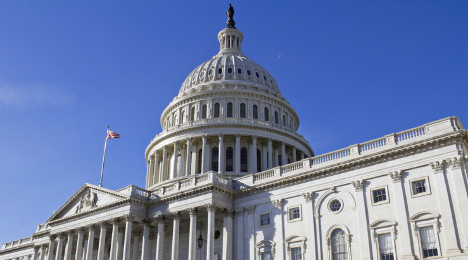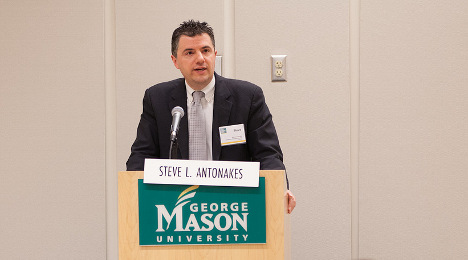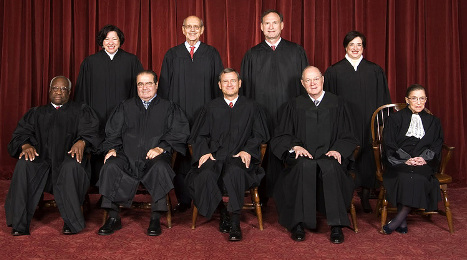Perhaps Sen. Richard Shelby, chairman of the Senate Banking Committee, asked the question dealers nationwide would like to pose to Richard Cordray, director of the Consumer Financial Protection Bureau.
Shelby took the opportunity when the committee conducted a hearing this week as Cordray made his latest appearance in front of the Senate gathering and shared the CFPB’s semiannual report. The Alabama Republican phrased his question in the same vein raised by the three major dealership associations, which voiced concerns about the consent order released by the CFPB and Department of Justice involving American Honda Finance Corp.
Shelby asked that since dealers are “explicitly exempted from the CFPB’s jurisdiction, how can this be seen as anything other than a back-door effort to regulate the auto dealers, which were basically exempt from Dodd-Frank?”
Cordray replied with a response that might not please dealers and their associations.
“In terms of responsibility, we’ve been very careful to observe a line that was not necessarily an obvious or logical line that Congress drew, which was to say that the bureau has jurisdiction over auto lenders but does not have jurisdiction over auto dealers,” Cordray said. “That jurisdiction as I understand it has been given to the Federal Trade Commission.
“We feel that means the law has spoken clearly in terms of responsibility to address any sort of issue with regard to discrimination or other violations of the law by lenders, but not by dealers,” he continued. “That may be illogical, but that’s the line we have and have taken our responsibility seriously there.
“As I said, we have a partner in this work, which is the Department of Justice,” Cordray went on to say. “We work together to address these issues. I think that’s been appropriate, but I’m always willing to hear more from the members of this committee and members of Congress. We are simply looking to enforce the law and do it accurately and appropriately.”
Before touching on the “illogical” part of the CFPB’s jurisdiction, Cordray praised American Honda Finance for agreeing to the consent order, which includes the reduction in dealer discretion to mark-up the interest rate to only 1.25 percent above the buy rate for contracts with terms of 5 years or less, and 1 percent for auto loans with longer terms.
“We did resolve a matter with Honda. It’s to Honda’s credit. I would commend them,” Cordray said. “They have taken far-reaching steps to constrain the discretionary markup, which we think has led to discrimination for consumers and the Justice Department thinks has led to discrimination for consumers.
“It was industry leadership that Honda demonstrated and I commend them for that,” he continued.
The nearly 2 1/2-hour hearing that also delved into the mortgage and credit card markets retuned to vehicle financing when Sen. Tim Scott of South Carolina took his turn. The Republican first pointed out the significant auto presence in his state since South Carolina contains manufacturing plants for several foreign OEMs, including BMW and Mercedes-Benz. Scott also referenced the auto finance bulletin the CFPB released in 2013; a policy he called a “one-size-fit-all, cookie-cutter regulation on lenders and dealers.”
Scott went on to say that because of the consent order involving American Honda Finance, “it seems like your bureau is regulating heavily the relationship between lenders and dealers. I’m not as concerned about the dealers or the lenders. I’m really concerned about consumers … who will now perhaps pay a higher price for those vehicles because of the government’s involvement in trying to make things better.
“Director Cordray,” Scott continued, “eliminating the ability for lenders and dealers to compete for a customer’s business will mean that the customer ultimately pays a higher interest rate, how do we explain that back at home if the CFPB’s involvement effectively forces some South Carolinians to pay a higher interest rate on their car note and how does that provide great consumer protection?”
Cordray first replied by referencing the automotive footprint in his home state of Ohio, which boasts installations for General Motors, Fiat-Chrysler as well as Honda. Then he shared what Scott and other lawmakers can convey to their constituencies.
“The last thing I want is to do things that hamstring important markets like auto lending,” Cordray said. “If I do that, it would be to the detriment of my agency and the American public. So we’re very concerned about this.
“We have had the hottest auto market in the last several years than we’ve had in the history of this country,” he continued. “That’s at the same time the bureau was gathering its wings and coming into existence. I’m pleased about that because I believe consumers benefit when they have access to auto transportation.
“Probably in your area as it is in my, if you don’t have the ability to get around through a car or truck you’re really in a lot of trouble in your life,” Cordray went on to say. “Having said that we also believe strongly people should not be subject to higher prices or onerous terms based on their ethnic, racial or gender backgrounds. And the Justice Department feels strongly about that as well.”
Cordray closed his thought by returning to what the CFPB attempted to accomplish with the bulletin release more than two years ago.
“The bulletin was one that was a pretty straightforward restatement of law,” he said. “It wasn’t a change in the law. It simply stated that if you’re a lender and you have an automotive lending program, you’re subject to the Equal Credit Opportunity Act.
“That is an undeniable proposition and you need to think carefully about what your program is,” he added.
The No. 2 official at the Consumer Financial Protection Bureau has resigned, citing the burden of commuting between his home in Massachusetts and Washington, D.C.
According to documents obtained by SubPrime Auto Finance News on Friday, CFPB deputy director Steve Antonakes indicated he’s leaving the bureau to pursue opportunities that will give keep him closer to his wife and children.
“Having commuted from Boston for nearly five years, I have logged hundreds of thousands of miles and missed entirely too many class plays, teacher conference meetings and Little League games,” Antonakes wrote to CFPB colleagues on Thursday afternoon. “Accordingly, I have decided to return home to Massachusetts and pursue opportunities that will ensure that I am home for dinner with my wife and family and can assist my five children with their homework.
“I want to express my gratitude and reinforce just how proud I am of all of you,” he continued. “I began this journey in November 2010 and was excited by the idea of building a new institution charged with and equipped to appropriately oversee our nation’s consumer financial markets. Despite having arrived with a deep background in this field, I have learned so much from you.”
Antonakes continued his message by mentioning CFPB director Richard Corday about being “forever grateful” for “leadership and the opportunities that he has provided me.”
Antonakes went on to say, “Looking back, more so than any particular accomplishment — and there have been many — I will remember most fondly the friendships and the time we spent working together toward our shared goals. My time at the bureau has been the apex of my 25 years in government and bank regulation. I have been blessed to do worthwhile and interesting work alongside, smart, tenacious and dedicated public servants.
Antonakes closed by saying his choice “is in many ways a bittersweet decision. However, I am confident that this team will continue to do great work for American consumers.”
Antonakes began his professional career as an entry level bank examiner with the Commonwealth of Massachusetts Division of Banks in 1990. He later served in numerous managerial capacities before being appointed by successive governors to serve as the commissioner of banks from December 2003 until November 2010, becoming only the second career bank examiner to ever serve in that capacity.
Antonakes also previously served as the first state voting member of the Federal Financial Institutions Examination Council (FFIEC), as the vice chairman of the Conference of State Bank Supervisors (CSBS), and as a founding member of the governing board of the Nationwide Mortgage Licensing System (NMLS).
In March 2007, Antonakes received NeighborWorks America’s Government Service Award for his work in combatting foreclosures.
Cordray followed up Antonakes’ message with his own via email to CFPB employees.
“Steve has been an enormous asset to the bureau, and a great friend and colleague to me since our time together in SEFL (supervision, enforcement and fair lending) in the early days of the bureau,” Cordray said. “His contributions to this agency have been extensive in his dual roles as deputy director and SEFL associate director, and I know many of you share my appreciation for all his work.
“I have great respect for Steve’s decision to move closer to his family given my own situation with a weekly interstate commute,” Cordray continued while referencing his travels to his home state of Ohio. “It is not easy to juggle work at the bureau with family far away during the week, and Steve has done so incredibly well.”
Cordray closed by briefly mentioning what the CFPB might do next.
“We will provide additional information in the coming weeks about acting responsibilities for both the deputy director and SEFL associate director roles,” Cordray said. “For now, please join me in thanking Steve for his exceptional service to the bureau and to American consumers.”
It apparently didn’t take long for word within the Beltway to spread about Antonakes’ decision.
Richard Hunt, president and chief executive officer of the Consumer Bankers Association immediately shared his reaction.
“Steven Antonakes’ insight as a career examiner brought valued credibility to two important roles at the bureau: deputy director and associate director for supervision, enforcement and fair lending,” Hunt said. “He struck the right balance between the safety and soundness of a bank and consumer protection.
“We wish him all the very best as he returns home to his family in Massachusetts and the New England Patriots,” Hunt went on to say.
While much of the industry is somewhat gnashing its collective teeth over the consent agreement American Honda Finance Corp. reached with federal regulators, Arent Fox senior automotive counsel Rob Cohen used descriptors such as “silver lining” and “golden goose” when analyzing the ramifications of the captive’s move with the Consumer Financial Protection Bureau and Department of Justice.
Cohen explained in a message to SubPrime Auto Finance News that American Honda Finance could have leveraged findings from the Charles River Associates study orchestrated by the American Financial Services Association. Cohen pointed out that analysis showed dealer participation disparities among minority borrowers are based upon “deeply flawed” data.
So where does the “silver lining” and “golden goose” come into play? With this consent order, Cohen said the CFPB demonstrates a lack of understanding of the indirect financing model.
“By limiting the amount of dealer participation, the CFPB has neither eliminated discretionary pricing nor has it taken any action that will result in lower finance rates to consumers,” he said. “Under this consent order, AHFC is free to charge higher wholesale finance rates to dealers and still remain competitive with other auto finance companies that have no restrictions on their compensation models.
“What remains to be seen is whether AHFC will provide additional ‘non-discretionary’ compensation to make up for the reduced retail margin,” Cohen added.
According to regulators, Honda will reduce dealer discretion to mark-up the interest rate to only 1.25 percent above the buy rate for contracts with terms of 5 years or less, and 1 percent for auto loans with longer terms. Honda also has the option under the order to move to non-discretionary dealer compensation.
“The bureau did not assess penalties against Honda because of Honda’s responsible conduct, namely the proactive steps the company is taking that directly address the fair lending risk of discretionary pricing and compensation systems by substantially reducing or eliminating that discretion altogether,” said CFPB officials, which also ordered the captive to pay $24 million in restitution to affected borrowers.
Kelley Blue Book senior analyst Karl Brauer suspects the consent order will sharpen regulators’ focus even more.
“A decision like this will lead to closer scrutiny of the dealerships’ financing practices by Honda, though it’s difficult for Honda to monitor every finance deal at every one of its dealers,” Brauer said in a message to SubPrime Auto Finance News. “It’s unfortunate Honda has to pay the fine when the dealers are the primary entity in how these loans are structured.
“Honda’s choice was to pay the fine or fight the charges, and given the negative publicity a case like this will generate, they probably see the fine as the most efficient solution,” he continued.
Publicity is an area also mentioned by Edmunds.com president Seth Berkowitz, whose site works with about 500 Honda dealerships. Berkowitz explained long-term ramifications depend on which “narrative is on the ascendancy,” meaning will it be the one from the CFPB and DOJ or industry associations.
“There’s nobody in the United States that would be excited about unfair lending practices or could defend that in any way,” Berkowitz said during a phone interview this week. That’s on the one hand.
“But the other question is, is the type of CFPB imposed settlement going to have much broader impacts than the narrow effort to deal with unfair lending practices,” he continued. “The industry claim is that these caps are going to impact people’s ability to garner discounted financing. To the extent that narrative prevails, then I think people will look at this as perhaps the government ultimately impacting their ability to secure cheaper or better financing.
“It will be interesting over the coming weeks which narrative prevails because I think everyone is interested in cheap and fair financing,” Berkowitz went on to say.
No matter, Honda dealerships are going to be impact since their captive permitted stores to mark-up consumers’ interest rates as much as 2.25 percent for contracts with terms of five years or less, and 2 percent for contracts with longer terms.
“Dealers have increasingly leveraged F&I as a source of profit over the last few decades because of reduced margins on new-car pricing,” Brauer said.
“F&I is more important now than ever before in contributing to a dealership's bottom line, and given the growing length and size of car loans in today’s market, there’s an unprecedented amount of money flowing through these departments,” he went on to say.
And from Berkowitz’s view, don’t expect a parade of captives implementing changes unless regulators force the modifications.
“Stemming from the industry reactions, it would seem unlikely that the captive finance arms would voluntarily impose upon themselves what was worked through in the settlement with Honda,” Berkowitz said.
Brauer closed the discussion with one more thought.
“All finance companies have to follow equal lending laws or risk being investigated and fined,” he said. “Unfortunately, while most companies follow best practices for equal lending, there’s always a percentage trying to generate extra profit through unscrupulous policies.”
Exactly two weeks before a consent order involving American Honda Finance Corp. came to light, documents the Consumer Financial Protection Bureau shared by anonymous sources generated online reports about the forthcoming regulatory developments.
Now, the National Automobile Dealers Association wants to know the entirety of an internal CFPB memo that sparked that initial report.
Earlier this week, NADA asked the CFPB to make public an agency memo that appears to “plainly undermine” the bureau's “long-standing claims” that it is not targeting dealers through enforcement actions. The request was made under the Freedom of Information Act (FOIA) and signed by NADA chief regulatory counsel Paul Metrey.
According to a June 30 article published by American Banker, three senior CFPB officials sent CFPB director Richard Cordray a memo outlining how a proposed settlement with American Honda Finance would further the agency's “goal” of “significant[ly] limiting dealer discretion.”
The report indicated Jeffrey Morrow, Jane Peterson and Rebecca Gelfond wrote in a June 16 memo to Cordray about the proposed Honda settlement and stating, “The significant limitation of dealer discretion, which in turn reduces fair lending risk, is one of the goals we have been seeking with respect to the indirect auto matters, and this settlement proposal attains that goal.”
Dealer discretion is the amount of a vehicle installment contract the dealer is able to discount at the retail level for a customer. Since this type of discounting begins and ends at the dealership, NADA insisted any targeting of dealer discretion is tantamount to regulating what actions a dealer is permitted or not permitted to take.
NADA officials reiterated the Wall Street Reform and Consumer Protection Act — better known as Dodd-Frank — specifically prohibits the CFPB from regulating dealers.
Yet NADA president Peter Welch contends the bureau's actions have caused many, including both Republican and Democratic members of Congress, to question whether the CFPB has attempted to skirt its jurisdictional boundary in an effort to regulate dealers.
"If true, the statements made by senior CFPB officials in this memo directly contradict repeated statements, including testimony before Congress, from director Cordray that he is aware and respectful of his Congressional mandate not to regulate dealers,” Welch said.
“Consumers benefit tremendously from dealer discounts, so they deserve to know if these discounts are in danger of being unjustly and unfairly eliminated by overzealous Washington regulators,” he added.
NADA added the memo, as well as proposed consent orders against Honda and two other captive finance sources, appear to have been leaked to American Banker, as only some of the documents referenced in the article are in the public domain. The consent order with Honda was released on Tuesday.
A copy of NADA's letter to the CFPB’s chief FOIA officer is available here.
In a previous message to SubPrime Auto Finance News, CFPB communication director Jen Howard offered this statement regarding the information obtained by American Banker.
“Our enforcement process is confidential and we take any breach of that confidentiality very seriously," Howard said. "We are referring this matter to the Office of the Inspector General for further investigation and will cooperate fully.”
The Consumer Financial Protection Bureau and Department of Justice just took a big bite out of the F&I income Honda dealerships can generate through the financing of vehicle installment contracts by their captive.
CFPB and DOJ officials said on Tuesday that they resolved an action with American Honda Finance Corp. they believe will put new measures in place to address discretionary auto loan pricing and compensation practices.
The agencies indicated Honda’s past practices resulted in thousands of African-American, Hispanic, and Asian and Pacific Islander borrowers paying higher interest rates than white borrowers for their installment contracts, without regard to their creditworthiness.
As part of the order, officials said Honda will change its pricing and compensation system to substantially reduce dealer discretion and minimize the risks of discrimination, and will pay $24 million in restitution to affected borrowers.
According to the consent order, Honda’s captive will limit dealer participation to 125 basis points for installment contracts with terms of 60 months or less. For contracts longer than 60 months, the cap is set at 100 basis points.
Officials maintained that Honda permitted dealers to mark-up consumers’ interest rates as much as 2.25 percent for contracts with terms of five years or less, and 2 percent for contracts with longer terms.
The agencies explained the enforcement action is the result of a joint CFPB and DOJ investigation that began in April 2013. The agencies investigated Honda’s indirect auto lending activities’ compliance with the Equal Credit Opportunity Act, which prohibits creditors from discriminating against loan applicants in credit transactions on the basis of characteristics such as race and national origin.
The investigation concluded that Honda’s policies:
• Resulted in minority borrowers paying higher dealer markups: Honda violated the Equal Credit Opportunity Act by charging African-American, Hispanic, and Asian and Pacific Islander borrowers higher dealer markups for their auto contracts than non-Hispanic white borrowers. These markups were without regard to the creditworthiness of the borrowers.
• Injured thousands of minority borrowers: Honda’s discriminatory pricing and compensation structure meant thousands of minority borrowers from January 2011 through July 14, 2015 paid, on average, from $150 to over $250 more for their auto loans.
Reaction from Honda
In a statement posted on its website, American Honda Finance officials said their consent agreement with federal agencies, “shows our commitment to work together to be part of the solution and to establish the path forward that best supports our Honda and Acura customers and dealers with clear and convenient financing options.
“AHFC strongly opposes any form of discrimination, and we expect our dealers to uphold this principle as well. We firmly believe that our lending practices have been fair and transparent,” they continued.
“AHFC has a difference of opinion with the CFPB and the DOJ regarding the methodology used to make determinations about lending practices, but we nonetheless share a fundamental agreement in the importance of fair lending,” the officials went on to say.
Honda Finance didn’t mention the specific figures regarding dealer participation that the CFPB and DOJ did in the consent order. Rather, officials said, “In cooperation with the CFPB and the DOJ, AHFC will be working closely with our Honda and Acura dealers in proactively adjusting our pricing programs to continue to give our customers the ability to choose the loan that is best for supporting their purchase of Honda and Acura products.
“As part of this new program, AHFC will announce later this year adjustments to our caps for dealers in setting the rate for retail installment contracts lower than the present level,” they continued.
“We will be implementing this change in combination with other adjustments and modifiers in a way that continues to support our Honda and Acura dealers' present business compensation with a full array of financing options,” captive officials added.
American Honda Finance also pointed out that as a result of this settlement, no civil penalties have been assessed.
Along with establishing a $24 million fund that will be used to compensate customers identified by the CFPB and the DOJ, the captive indicated it will continue to enhance our long-standing commitment to support financial literacy education and ensure that the future generation of customers is well informed about the process of financing vehicles.
More details of enforcement action
Officials reiterated the Dodd-Frank Wall Street Reform and Consumer Protection Act, and federal fair lending laws, authorize the CFPB and DOJ to take action against creditors engaging in discrimination.
The CFPB’s order was filed on Tuesday as an administrative action, and DOJ’s proposed order was filed in the U.S. District Court for the Central District of California.
The agencies contend the measures provided in the orders will help ensure that discrimination does not increase the cost of auto loans for consumers on the basis of race and national origin.
Under the CFPB order, Honda must:
• Substantially reduce or eliminate entirely dealer discretion: Honda will reduce dealer discretion to mark-up the interest rate to only 1.25 percent above the buy rate for contracts with terms of 5 years or less, and 1 percent for auto loans with longer terms. Honda also has the option under the order to move to non-discretionary dealer compensation.
“The bureau did not assess penalties against Honda because of Honda’s responsible conduct, namely the proactive steps the company is taking that directly address the fair lending risk of discretionary pricing and compensation systems by substantially reducing or eliminating that discretion altogether,” CFPB officials said.
• Pay $24 million in damages for consumer harm: Officials said Honda will pay $24 million to a settlement fund that will go to affected African-American, Hispanic, and Asian and Pacific Islander borrowers whose auto loans were financed by the captive between January 2011 and Tuesday.
• Administer and distribute funds to victims: Officials said Honda, through American Honda Motor Co., will contact consumers, distribute the funds and ensure that affected borrowers receive compensation. Honda will make reports to the bureau regarding this victim compensation activity.
“The CFPB is committed to creating a fair marketplace for all consumers, and other auto lenders should take note of today’s action,” CFPB director Richard Cordray said. “Honda’s proactive decision to move to a new pricing and compensation system demonstrates industry leadership and represents a significant step towards protecting consumers from discrimination.”
The head of DOJ’s Civil Rights Division, principal deputy assistant attorney general Vanita Gupta, also reacted to Tuesday’s development.
“We commend Honda for its leadership in agreeing to impose lower caps on discretionary markups and for its commitment to treating all of its customers fairly without regard to race or national origin,” Gupta said.
“We recognize that dealerships perform a valuable service in connecting customers with lenders and that they should be fairly compensated for that service,” Gupta continued. “We believe that Honda’s new compensation system balances fair compensation for dealers and fair lending for consumers.
“We hope that Honda’s leadership will spur the rest of the industry to constrain dealer markup to address discriminatory pricing,” Gupta went on to say.
In March 2013, the CFPB pointed out that it issued a bulletin explaining that it would hold indirect auto finance accountable for “unlawful discriminatory” pricing. Bureau officials reiterated the bulletin also made recommendations for how indirect auto finance companies could ensure that they were operating in compliance with fair lending laws.
Last September, the bureau also issued an edition of supervisory highlights that explained that the bureau’s supervisory experience suggests that significantly limiting discretionary pricing adjustments may reduce or effectively eliminate pricing disparities.
“Substantial limits on discretionary pricing like those imposed by today’s order can address the type of fair lending risk identified in the CFPB’s bulletin and supervisory highlights,” officials said.
Officials mentioned Tuesday’s action is part of a larger joint effort between the CFPB and DOJ to address discrimination in the indirect auto lending market. In December 2013, the CFPB and DOJ took an action against Ally Financial and Ally Bank that ordered Ally to pay $80 million in consumer restitution and an $18 million civil penalty.
The National Automotive Finance Association established the next in-person session to create another cohort enrolled in its Consumer Credit Compliance Certification program.
The NAF Association will host the opening module of the four-part training endeavor at the Irvine Marriott in Irvine, Calif., on Sept. 15-16.
After two days of classroom style learning in Irvine to complete Module 1, participants will move onto the 29 self-paced, Web-based sessions covering federal and state laws and regulations that govern the auto financing business.
Successful testing throughout the program is necessary before progressing in the program.
The certification of Compliance Professional awarded upon completion of Module 4, a live classroom session covering the Consumer Financial Protection Bureau.
“A critical part of a compliance management system is staffing it with qualified compliance personnel,” NAF Association executive director Jack Tracey said.
“A company having their compliance officer(s) certified through a comprehensive educational program is a clear demonstration of the importance the organization places on compliance,” Tracey continued.
This program is available to the staff of NAF Association member companies at the price of $2,000 per person and non-member companies at $3,000 per person.
Individuals can complete program enrollment here.
For more information, visit nafassociation.com or contact Tracey at (410) 865-5431 or jtracey@nafassociation.com.
A wide array of service providers now operate to help finance companies keep payments coming into their coffers along with ways so customers can stay current on their vehicle installment contracts, especially individuals who might fall into the growing underbanked population.
With the payment industry expanding, the Consumer Financial Protection Bureau stepped in on Thursday by outlining what it says are guiding principles for “protecting” consumers as the private sector develops new faster payment systems.
The CFPB contends these new systems are aimed at reducing “pocket-to-pocket” payment times between consumers and businesses or other entities such as auto finance companies. The CFPB emphasized that it wants to ensure any new payment systems are secure, transparent, accessible and affordable to consumers.
CFPB director Richard Cordray added these systems should also have robust protections when it comes to fraud and error resolution.
“Companies developing new financial technologies should be building systems from the outset with consumer protections in mind,” Cordray said.
“It is a lot easier to build something right from the start than it is to retrofit it,” he said. “The CFPB will continue our work to help ensure that financial services marketplaces are safe and transparent for consumers.”
The bureau highlighted nine areas of concern involving faster payment systems, including
—Consumer control over payments
—Data and privacy
—Fraud and error resolution protections
—Transparency
—Cost
—Access
—Funds availability
—Security and payment credential value
—Strong accountability mechanisms that effectively curtail system misuse
“These principles express the bureau’s vision for new payment systems that draws upon lessons we have learned from existing systems and ongoing payment innovation,” CFPB officials said in the guidance published here.
“In publishing these principles, we are not specifying how they must be achieved,” they continued. “Rather, we recognize that a variety of system components, including system architecture, operator covenants and warranties, requirements for participants and intermediaries, rules, and other mechanisms may play critical roles in providing consumer protection, utility and value.”
Assessment of current environment
When making payments today, the CFPB contends consumers generally have multiple options which include providing cash, writing a check, swiping a credit or debit card and entering information online for an electronic payment.
In general, non-cash payments are primarily processed through one or a combination of payment systems, including the automated clearing house (ACH), PIN debit, the credit card network, wire network, or check services. For these non-cash payments, the bureau indicated there can be a delay of several hours to several days between the time a consumer initiates a transaction and the party to be paid actually receives the money.
The CFPB also believes all existing payment systems — including those that involve the exchange of cash — expose consumers to some risk of loss or security, including in some cases, risks of unauthorized or fraudulent debits.
The agency explained payment system participants, including payers, payees, providers, institutions, and operators, are subject to rules and regulations that specify how the payment system works and ensure consistency and predictability to all parties involved.
Generally, officials pointed out payment networks are governed by a combination of operator rules, private network rules, and government regulation.
Operators have rules for the banks and other entities that connect to and use their respective networks. Payment system participants are also subject to a number of federal regulations, such as the Electronic Fund Transfer Act.
“While American consumers benefit from and make use of these payment systems, there remain opportunities to improve efficiency, reduce transaction costs for consumers, and reduce credit and fraud risks,” the CFPB said.
“There is also greater opportunity for consumers to have real time information about their account balances so they can know when they do and do not have funds to transact,” the bureau continued.
The agency acknowledged companies in the technology and finance fields are currently developing real-time or near real-time payment systems for the United States, and regulators, the financial services industry, and consumer groups are all contributing, too.
“The CFPB wants to ensure that consumer protections are at the forefront as new and improved payment systems are developed,” officials said.
Large regulatory network polices payments
The Federal Reserve Board and other regulators — including the Federal Deposit Insurance Corp., the Office of the Comptroller of the Currency, the National Credit Union Administration, and state banking commissions — all regulate payment networks to combat money laundering and to ensure the safety and soundness of payment system participants.
Other federal agencies, such as the Federal Trade Commission, also play a role in this space.
Notably, the Federal Reserve has been engaged in an ongoing initiative to improve payment systems. A recent statement about that effort noted that among other objectives, the process would work “with payment stakeholders to identify effective approach(es) to implementing a U.S. payments infrastructure to support a safe, ubiquitous, faster payments capability that promotes efficient commerce, facilitates innovation, reduces fraud and improves public confidence.”
The CFPB pointed out that it has been advocating for the development of faster and safer consumer payment capabilities in new and existing payment systems. The CFPB sent a comment letter earlier this year in response to a faster payment proposal by the National Automated Clearinghouse Association (NACHA).
“The bureau will continue to work with other regulators, entities that are developing the new systems, and other stakeholders to ensure that new payment systems address consumer needs and interests,” officials said.
How much F&I income dealerships can generate might have sustained another impediment stemming from a published report that surfaced this week.
SubPrime Auto Finance News connected with Ben Saul, who is a partner in Goodwin Procter’s consumer financial services litigation group in Washington, D.C., to discuss the implication of the captive finance companies for Honda, Nissan and Toyota potentially entering into consent decrees with the Consumer Financial Protection Bureau and the Department of Justice.
American Banker reported that it obtained confidential documents that indicated American Honda Finance Corp., Toyota Motor Credit Corp. and Nissan Motor Acceptance Corp. would accept as part of consent decrees involving unintentional discrimination that the captives would reduce dealer participation. The report said the markup would be cut from about 200 basis points per vehicle installment contract down to 100 basis points.
After seeing the online report, Saul emphasized, “It remains to be seen what the actual consent orders will say. I think it’s important to mindful of that; or even if there will be consent orders. It’s a process. Both parties have to agree. You file a consent order. The judge has to enter it. There’s a whole process that hasn’t played out. We’re way out in front of it.”
But presuming these documents preview what the captives and regulators finalize, Saul told SubPrime Auto Finance News during a phone interview on Wednesday that the development “would be a significant move for the industry. It may be a harbinger for other industry participants to move markup caps down, which is of course something that in dribs and drabs has been happening since the indirect auto fair lending examinations and investigations really kicked off with a fervor several years ago.
“I would expect that’s how the industry will react,” he added.
While none of the captives nor the regulators have yet to make official announcements, Saul leveraged his experiences to explain the current stage. He has represented clients in matters involving not only the CFPB and DOJ, but also situations associated with the Federal Trade Commission and the Securities and Exchange Commission.
“These investigations are fairly advanced. The article referenced internal memorandum provided internally at the CFPB seeking authorization for terms and conditions of the consent decree,” Saul said. “That tells you that negotiations surround the consent decree are at an advanced stage presumably.
“Although anything can happen in a negotiation, we’re likely to see a negotiated resolution soon in the near term,” he continued.
While the possible change in dealer participation at these three captives, the report doesn’t indicate a the finance arms for Honda, Nissan and Toyota are preparing to switch to a flat-fee structure, which BB&T Dealer Finance chose to do last month without a regulatory demand.
“If this was a move to flats, it would be tremendously significant. But it does appear that the agreement in the consent order will stop short of that more dramatic move,” Saul said.
“There’s no question that there is a current in the industry that has been moving for some time moving in the direction of either reduced markup caps or either going one step further, the imposition of a flat-fee or fixed structure,” he continued.
“I think that movement is picking up momentum but a movement to flats in particular would be such a seismic shift in the structure of these transactions that I suspect, given the breadth and scope of the industry players, that many will continue to be resistant to a movement to flat fees,” Saul went on to say.
“So as long as that is the case, the momentum will be limited. Certainly I think the momentum is picking up steam, but it probably has not yet reached a critical mass that you’re going to see a broad-based shift in how this compensation model works,” he concluded.
FNI Inc. president David Bafumo focused his latest industry recommendations by plucking relevant material pertaining to add-on products out of the 54-page addition to the Supervisory and Examination Manual the Consumer Financial Protection Bureau released when it established its final “larger participant” rule earlier this month.
Bafumo broke down the CFPB’s latest regulatory offerings that were connected with add-on products into three segments, including:
— Scope of product authority
— Product examination specifics
— Service provider oversight
“The newly updated examination procedures provide great insight into the bureau’s thinking about auto finance add-on products, settling some lingering industry speculation about the regulatory spotlight on add-on products and raising new ones,” Bafumo said in his latest FNI newsletter.
Scope of product authority
Bafumo explained that many operations in the product industry have long maintained the bureau has little or no authority to directly regulate product providers or administrators.
“That may be true, just as the bureau may not directly supervise automotive dealers,” he said. “In reality though, that has never been the issue for auto finance providers. The real issue is whether and how the bureau intends to hold auto finance companies responsible for how products are financed and sold in conjunction with an auto loan.”
Bafumo acknowledged there might be executives and managers not convinced about the CFPB’s intentions coming out of the June 2013 consent orders the bureau reached with U.S. Bank and Dealer Financial Services. He recapped the CFPB held both entities responsible for how GAP and vehicle service contracts were sold to consumers.
According to the new examination procedures, the CFPB spells out three types of “ancillary products and services” that are specifically subject to review in conjunction with an auto finance company examination. That group includes:
— GAP insurance
— Extended warranty or vehicle service contract
— Vehicle add-ons.
Regulators define these products as “back-end products … (and) other pieces of equipment or finishing items that can be purchased with the vehicle such as Lo-Jack systems, (VIN) etching (anti-theft precaution), and paint protection.”
In addition, Bafumo pointed out the first two examination procedures in the CFPB’s optional product section name the following products as examples of optional products and services subject to the exam process:
— Biweekly payment plans
— Payment protection
— Credit protection
— Extended warranties
— Debt cancellation
— Debt suspension.
Bafumo also mentioned the optional products section answers “another big scope question.”
He added, “Does this product review apply for companies offering products of their own or for any company who provides additional financing for optional add on products?”
In answering his own question, Bafumo returned to the CFPB’s material, which states, “Determine whether the servicer (entity being examined) offers or finances optional products or services.”
With emphasis added, Bafumo said, “There is no distinction for a finance company that offers products directly or one that merely provides additional financing for optional products.”
Product examination specifics
Once it has been determined optional products are at issue, Bafumo indicated that CFPB examiners are instructed to investigate the following:
— How optional products are “monitored” overall
— Monitoring and timeliness of product cancellations
— Involvement of a product service provider
— How the finance company ensures products are optional
— Review of product marketing materials
— Prominent disclosure of product cost and terms
— Explicit consumer authorization to purchase
— Specific requirements for bi-weekly pay plans
Bafumo acknowledged there is not a lot of new information here.
“Previous guidance bulletins and multiple enforcement action consent orders in the add-on product space have already identified most of the above, and hinted at some, like a focus on product cancellation issues,” Bafumo said. “And while an itemized instruction point for the marketing of bi-weekly pay plans is notable, the bureau’s interest in that particular product/service is well documented.
“What’s missing from the exam specifics is actually what’s most interesting,” he continued. “While the procedures clearly include products that are ‘offered or financed’ and offers specific direction for examining call centers, Web-based marketing and third party ‘service providers’ of products for a supervised entity, the fact that the vast majority of add-on products are actually sold by automobile dealers is curiously absent.
“In fact the words ‘auto dealer’ do not appear at all in the entire exam section for optional products,” Bafumo went on to say.
The FNI president wondered himself how that situation can be, especially since the CFPB knows dealers sell add-on products offered by or financed by (or both) auto finance companies.
Bafumo even pointed out that the bureau’s acknowledgement appears in the first sentence of the ancillary product and services definitions, which state, “In addition to the actual vehicle, auto dealers and auto financers offer ancillary services and products at the time of vehicle purchase.”
As a result, Bafumo made this assessment.
“One possibility is that the CFPB is signaling an intention to consider auto dealers who originate retail installment contracts in indirect auto finance transactions to be finance company ‘service providers’ as defined in the bureau’s original service provider Bulletin 2012-03,” he said.
Service provider oversight
Signaling of intentions or not, Bafumo contends the latest regulatory material from the CFPB sets forth the examination topics relating to service provider oversight. Those subjects include:
— Controls for selecting and monitoring service providers
— Ensure service providers are licensed or registered (as applicable)
— Initial due diligence on service providers before entering agreements
— Monitoring of screening, hiring and training of service provider employees
— Ensuring service provider compliance with privacy policy
— Documentation of audits of service providers’ activities and remediation of concerns
Bafumo explained the examination instructions for service provider oversight include several noteworthy items and valuable guidance.
“First for example, a specific standalone directive to ensure service providers are properly ‘licensed or registered to the extent required, interestingly, has not been previously singled out in service provider guidance,” Bafumo said. “Perhaps another clue about bureau intentions about persons or entities that actually do the selling of add on products offered or financed by supervised companies.
“Secondly, examination inquiries into service provider due diligence are directed specifically at ‘prior regulatory compliance history’ and ‘existence and extent of any prior enforcement actions against the service providers,’” he continued.
“Lastly, a directive for privacy policy compliance with regard to data shared with service providers by the supervised entity demonstrates the continuing spotlight on data security and privacy concerns throughout the financial services industry,” Bafumo went on to say.
What might be next
Bafumo also mentioned the new exam procedures include some “odd” language choices by the bureau. For instance, he noted the repeated reference to GAP as an “insurance policy” and then what appears as a careful avoidance of using the “I-word” (insurance), when it comes to “credit protection” and “payment protection.”
Bafumo said, “Some might argue sloppiness or a misunderstanding of industry products or procedures. I suggest the opposite and that the bureau’s words are carefully chosen.
“While some in the insurance industry cling to a hope that the ‘business of insurance’ remains hands-off to the bureau and federal regulators by specific exclusion in Dodd-Frank and the now seventy year old McCarran–Ferguson Act (which arguably would not apply in the context of GAP since most states have decided not to regulate GAP as insurance),” he continued, “I believe the inclusion of GAP “Insurance” by name and “credit protection” here are clear signals of the bureau’s intention to hold supervised entities ultimately responsible for UDAAP violations tied to optional add-on products, regardless of insurance classification, when they are connected to an auto finance transaction.”
The Consumer Financial Protection Bureau now possesses a Supreme Court majority opinion as reinforcement to continue to leverage disparate impact as a regulatory method to oversee and potentially reprimand the auto finance industry.
The Supreme Court released its opinion this week on a case involving the Fair Housing Act, but a wide array of legal experts and industry supporters explained the CFPB can use the high court’s 5-4 decision to keep disparate impact theory as pathway of vehicle financing enforcement.
To recap, disparate impact is a theory where a policy or practice can be deemed discriminatory and illegal if it has a disproportionate adverse effect on minorities or other protected classes, even if unintentional. It’s the theory the CFPB used to penalize Ally Financial at the end of 2013 to the tune of $80 million.
The CFPB uses the Bayesian Improved Surname Geocoding (BISG) proxy methodology to determine disparate impact to legally protected groups. Officials explained that BISG estimates race and ethnicity based on an applicant’s name and census data.
The legal theory became the focus of a debate in front of the Supreme Court back in January with the case of the Texas Department of Housing and Community Affairs versus the Inclusive Communities Project. The case focused on the use of low income housing tax credits, which are federal tax credits distributed to low-income housing developers by state housing authorities.
In 2009, the Inclusive Communities Project (ICP) sued the Texas Department of Housing and Community Affairs (TDHCA) claiming that TDHCA disproportionately granted tax credits to minority neighborhoods and away from affluent neighborhoods, a practice attorneys said perpetuated segregation in violation of the Fair Housing Act. At trial, ICP attempted to show discrimination by disparate impact, and the court ruled against TDHCA, which later appealed claiming that the district court used the wrong standard to evaluate disparate impact claims.
Ruling in favor of ICP were associate justices Ruth Bader Ginsburg, Sonia Sotomayor, Stephen Breyer, Elena Kagan and Anthony Kennedy, who wrote the opinion for the majority. Opposing the decision were chief justice John Roberts and associate justices Antonin Scalia, Clarence Thomas and Samuel Alito Jr. While Alito composed the opposing opinion, Thomas also penned a separate dissenting view, too.
In fact, Alito closed the dissenting document by stating, “We should avoid, rather than invite, such ‘difficult constitutional questions.’ By any measure, the court today makes a serious mistake.”
Industry reaction to Supreme Court’s decision
Terry O’Loughlin, who spent more than 15 years with the attorney general’s office in Florida specializing in the prosecution of dealerships and others involved in the auto industry, concurred with Alito and the dissenting justices. After leaving his prosecutorial post, O’Loughlin joined Reynolds and Reynolds where he has been the director of compliance for nearly a decade.
“As with some of its other recent decisions, the Supreme Court’s decision in this case is a manifest departure from commonsense and judicial prudence,” O’Loughlin said in a message to SubPrime Auto Finance News. “The mission of any court or judge is to interpret the law as written not to fabricate additions to it to advance a certain agenda. If a federal act, such as the Fair Housing Act, doesn’t include certain legal theories in the act to apply, it is not the court’s role to provide them.”
“The CFPB will now feel vindicated,” O’Loughlin continued. “This decision will embolden it to continue its social engineering experiment causing higher costs to the public without much benefit. All dealers should implement the NADA’s Fair Credit Compliance Policy & Program with dispatch.”
Long before the Supreme Court heard arguments about disparate impact, the American Financial Services Association commissioned a nearly year-long study about how the CFPB uses BISG to show discrimination. AFSA said its examination of more than 8.2 million auto financing contracts found that the disparity alleged by the CFPB between the amount of dealer reserve charged to minorities and non-minorities is not supported by data.
AFSA president and chief executive officer Chris Stinebert looked for the positives of the outcome through a message to SubPrime Auto Finance News.
“The U.S. Supreme Court upheld the theory of disparate impact under the Fair Housing Act in Texas Department of Housing and Community Affairs, et al. v. The Inclusive Communities Project, Inc., but significantly narrowed how disparate impact can be used,” Stinebert said. “While important for the housing market, the ruling does not extend to other areas of consumer lending such as vehicle finance.
“Several important distinctions exist between the Fair Housing Act (FHA) and the Equal Credit Opportunity Act (ECOA), the statute under which the Consumer Financial Protection Bureau (CFPB) has authority to oversee auto lenders,” he continued.
“Specifically, ECOA does not contain “effects” language contained in other anti-discrimination statutes. The Supreme Court determined that the language contained in the FHA is equivalent to language found in other civil rights statutes that recognize disparate impact,” Stinebert went on to say.
In a statement posted on the organization’s website, American Bankers Association president and chief executive officer Frank Keating reiterated his apprehension about what the broad implications of using disparate impact might be.
“ABA and our members are strong advocates for fair lending and enforcement of the Fair Housing Act. Disparate Impact theory, however, is not the right tool to achieve fairness and prevent discrimination in lending,” Keating said. “This approach can have unintended consequences, such as causing financial institutions to shrink their operations rather than risk litigation, hurting the very groups it is intended to help.
“We believe that fair lending is achieved by consistently adhering to the same safe and sound credit standards for making, pricing and servicing loans for all customers, eliminating the potential for unfair treatment of any individual,” he continued.
“The banking industry is committed to a discrimination-free lending environment. ABA will continue to work with federal agencies to establish clear criteria about how a bank’s fair lending performance will be judged,” Keating went on to say.
Disparate impact questions raised in opinions
Even in his majority opinion, associate justice Kennedy acknowledged the potential problems using disparate impact can pose in an enforcement action.
“In a similar vein, a disparate-impact claim that relies on a statistical disparity must fail if the plaintiff cannot point to a defendant’s policy or policies causing that disparity,” Kennedy wrote. “A robust causality requirement ensures that ‘[r]acial imbalance . . . does not, without more, establish a prima facie case of disparate impact’ and thus protects defendants from being held liable for racial disparities they did not create.”
Kennedy explained this case provided an example.
“From the standpoint of determining advantage or disadvantage to racial minorities, it seems difficult to say as a general matter that a decision to build low-income housing in a blighted inner-city neighborhood instead of a suburb is discriminatory, or vice versa,” Kennedy wrote. “If those sorts of judgments are subject to challenge without adequate safeguards, then there is a danger that potential defendants may adopt racial quotas — a circumstance that itself raises serious constitutional concerns.
“Courts must therefore examine with care whether a plaintiff has made out a prima facie case of disparate impact and prompt resolution of these cases is important,” he continued. “A plaintiff who fails to allege facts at the pleading stage or produce statistical evidence demonstrating a causal connection cannot make out a prima facie case of disparate impact.”
Kennedy went on to mention in the majority opinion that the limitations on disparate-impact liability are also necessary to protect potential defendants against “abusive” disparate-impact claims.
“If the specter of disparate-impact litigation causes private developers to no longer construct or renovate housing units for low-income individuals, then the FHA would have undermined its own purpose as well as the free-market system,” Kennedy wrote. “And as to governmental entities, they must not be prevented from achieving legitimate objectives.”
Despite that analysis, the five associate justices made their decision to affirm disparate impact use.
“In light of the longstanding judicial interpretation of the FHA to encompass disparate-impact claims and congressional reaffirmation of that result, residents and policymakers have come to rely on the availability of disparate impact claims,” Kennedy wrote.
Meanwhile associate justice Alito constructed a legal crescendo that climaxed with him claiming the high court made an error with this judgment.
“The text of the FHA simply cannot be twisted to authorize disparate-impact claims. It is hard to imagine how Congress could have more clearly stated that the FHA prohibits only intentional discrimination than by forbidding acts done ‘because of race, color, religion, sex, familial status, or national origin,’” Alito wrote.
“Congress has done nothing since 1968 to change the meaning of the FHA prohibitions at issue in this case. In 1968, those prohibitions forbade certain housing practices if they were done ‘because of’ protected characteristics,” he continued. “Today, they still forbid certain housing practices if done ‘because of’ protected characteristics. The meaning of the unaltered language adopted in 1968 has not evolved.
Alito closed the dissenting opinion by emphasizing “privileging purpose over text also creates constitutional uncertainty.
“The court acknowledges the risk that disparate impact may be used to ‘perpetuate race-based considerations rather than move beyond them,’ he wrote. “Yet it still reads the FHA to authorize disparate-impact claims. We should avoid, rather than invite, such ‘difficult constitutional questions.’ By any measure, the court today makes a serious mistake.”












